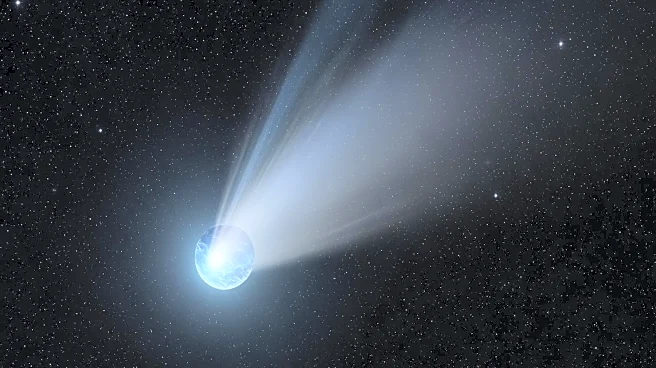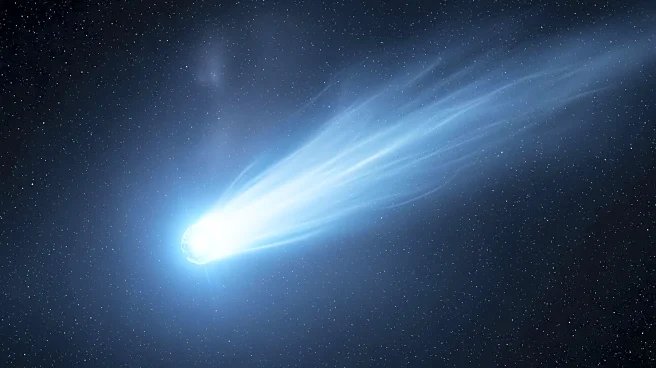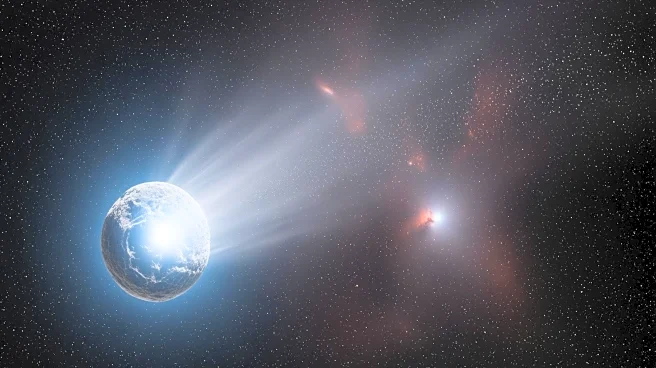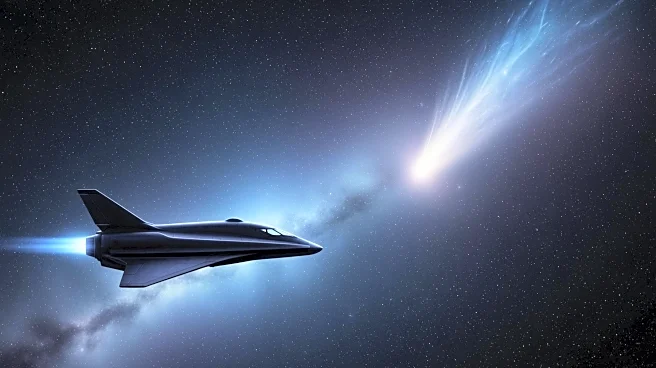What's Happening?
NASA has released new images of the interstellar object 3I/ATLAS, captured by the HiRISE camera on the Mars Reconnaissance Orbiter. The images show the object as a 'fuzzy white ball,' illuminated by the Sun,
with jets of dust and ice forming a coma. Harvard astronomer Avi Loeb has raised questions about the orientation of these jets, suggesting they may indicate an unusual nature of the object. While NASA maintains that 3I/ATLAS is a natural comet, Loeb speculates it could be an alien spacecraft, a theory NASA has dismissed.
Why It's Important?
The study of interstellar objects like 3I/ATLAS provides valuable insights into the composition and behavior of celestial bodies from outside our solar system. Understanding these objects can enhance our knowledge of cosmic phenomena and the potential for life beyond Earth. The debate over the nature of 3I/ATLAS highlights the intersection of scientific inquiry and speculative theories, driving interest and research in astronomy. The upcoming close pass of the object to Earth offers an opportunity for further observation and analysis, potentially resolving questions about its origin.
What's Next?
3I/ATLAS is expected to make its closest approach to Earth on December 19, allowing astronomers to conduct detailed observations. Ground-based and space telescopes will aim to measure the composition and dynamics of the object's jets, providing clearer evidence of its nature. The findings could either confirm its status as a natural comet or suggest alternative explanations. Continued research and observation will contribute to the broader understanding of interstellar objects and their implications for space exploration.











